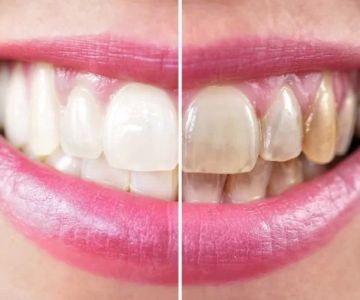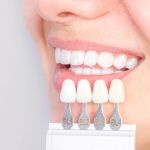What Are the Payment Plans Available for Expensive Dental Procedures?
- Understanding Expensive Dental Procedures
- Different Payment Options for Dental Procedures
- Dental Loans: A Flexible Solution
- Using Dental Insurance for Expensive Treatments
- CareCredit: A Popular Payment Plan for Dental Care
- Real-Life Stories: How Payment Plans Helped
- Dental Products to Help with Long-Term Care
Understanding Expensive Dental Procedures
Dental treatments can sometimes come with a hefty price tag. Procedures like dental implants, orthodontic treatments (braces), root canals, and full-mouth restorations can cost thousands of dollars. While the results can be life-changing, many people struggle with how to afford these essential treatments. Fortunately, various payment plans and financing options are available to make these treatments more accessible.
In this article, we will explore the different payment plans available for expensive dental procedures, including dental loans, dental insurance, and financing through services like CareCredit. We will also discuss real-life examples of how these options have helped individuals access the care they need.
Different Payment Options for Dental Procedures
1. Paying in Full Upfront
The simplest option is to pay for the treatment in full upfront. If you have savings set aside for dental care or can afford the full amount without financial strain, paying upfront might be the most straightforward way to go. This method avoids interest charges and the complexity of managing a payment plan. However, for many people, especially when facing extensive dental work, this may not always be a feasible option.
2. Insurance Coverage
Dental insurance is a common option for covering the costs of routine dental care. However, most dental insurance plans have limitations on how much they will cover for major procedures. It’s important to check with your insurance provider to understand your coverage limits and whether the procedure you need is included. While insurance might not cover the entire cost, it can significantly reduce the overall expense.
3. Financing Through Payment Plans
If paying the full cost upfront is not possible, many dental offices offer in-house financing or third-party payment plans that allow you to pay in installments over time. These payment plans typically break the total amount into monthly payments, making the cost more manageable.
Dental Loans: A Flexible Solution
Dental loans are personal loans offered by financial institutions or specialized lenders that can be used to cover the cost of expensive dental procedures. The benefit of a dental loan is that it allows you to borrow the amount needed for the procedure, which is then repaid in monthly installments. Many dental loans offer flexible terms and competitive interest rates, which can make them a great option for those who want to avoid paying high upfront costs.
Dental loans are available through various lenders, including banks, credit unions, and even specific dental financing companies. You should shop around for the best rates and terms, and consider your ability to repay the loan over time.
Using Dental Insurance for Expensive Treatments
If you have dental insurance, it can be used to reduce the out-of-pocket cost of expensive procedures. However, dental insurance coverage often has a cap, meaning it only pays a portion of the total cost. For more significant treatments like implants or full-mouth restorations, you may need to cover the remaining balance yourself.
Before undergoing treatment, make sure to contact your insurance provider to find out exactly what is covered. Many providers offer to help with pre-treatment estimates, which can help you budget and plan accordingly. Keep in mind that insurance may only cover a portion of the procedure’s cost, but it can still help make treatments more affordable.
CareCredit: A Popular Payment Plan for Dental Care
CareCredit is one of the most well-known financing options for dental care. It is a credit card specifically designed for healthcare expenses, including dental procedures. CareCredit offers promotional financing options such as no-interest or low-interest plans for qualified individuals, making it an attractive option for people who need help covering expensive dental procedures.
The application process for CareCredit is simple, and approval can often be done within minutes. Once approved, you can use the card at participating dental offices. It’s important to read the terms and conditions carefully, as some promotional offers may have specific time limits for paying off the balance before interest charges apply.
Real-Life Stories: How Payment Plans Helped
Many people have successfully used payment plans to manage the cost of expensive dental procedures. For example, Sarah, a mother of two, was facing a significant bill for her dental implants. Instead of worrying about the financial strain, she opted for a CareCredit plan, which allowed her to spread out payments without incurring high interest. With manageable monthly payments, Sarah was able to get the treatment she needed without putting her family’s financial health at risk.
Another example is John, who needed extensive orthodontic work. After discussing his options with his dentist, he decided to take out a dental loan to cover the cost. The loan offered him a low-interest rate, and he was able to pay off the balance over the course of a year, allowing him to receive the care he needed without financial stress.
Dental Products to Help with Long-Term Care
After investing in expensive dental procedures, it’s important to maintain your oral health to prevent future costly treatments. To help you with long-term care, consider using high-quality dental products such as electric toothbrushes, water flossers, and fluoride mouthwashes. Products from trusted brands like [Dentistry Toothtruth](https://familydentistryonline.net) can provide you with the tools you need to keep your teeth and gums healthy for years to come.







 Glendale Holistic Dentistry - Los Angeles Dentists Group4.0 (19 review)
Glendale Holistic Dentistry - Los Angeles Dentists Group4.0 (19 review) Shiney Smiles Orthodontics5.0 (165 review)
Shiney Smiles Orthodontics5.0 (165 review) Dr. Edward Rosenthal5.0 (109 review)
Dr. Edward Rosenthal5.0 (109 review) Newman Orthodontics4.0 (813 review)
Newman Orthodontics4.0 (813 review) Michael Brody DDS4.0 (8 review)
Michael Brody DDS4.0 (8 review) Canton Pediatric Dentistry & Orthodontics4.0 (387 review)
Canton Pediatric Dentistry & Orthodontics4.0 (387 review) The Importance of Oral Health Education During Pregnancy for a Healthy Pregnancy
The Importance of Oral Health Education During Pregnancy for a Healthy Pregnancy Best Tips for Brushing Your Teeth Properly for Healthy Gums: Essential Techniques for Oral Health
Best Tips for Brushing Your Teeth Properly for Healthy Gums: Essential Techniques for Oral Health Why Skipping Dental Checkups Can Lead to Bigger Oral Health Problems
Why Skipping Dental Checkups Can Lead to Bigger Oral Health Problems Advantages of Porcelain Dental Restorations
Advantages of Porcelain Dental Restorations How Can Diabetes Cause Tooth and Gum Problems? Preventing and Managing Oral Health Issues
How Can Diabetes Cause Tooth and Gum Problems? Preventing and Managing Oral Health Issues Healthy Habits for Promoting Good Oral Health and Hygiene: Tips for a Healthy Smile
Healthy Habits for Promoting Good Oral Health and Hygiene: Tips for a Healthy Smile